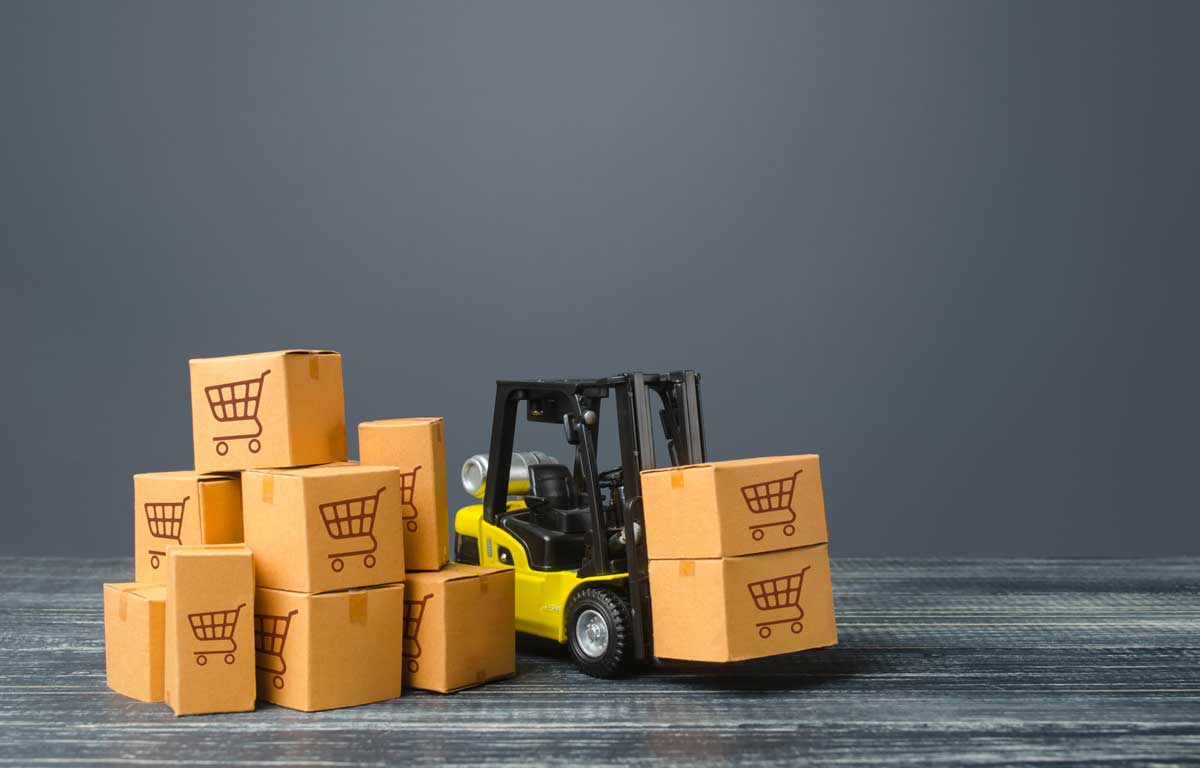Amazon is an amazing site packed full of opportunities for sellers to make significant profits.
That being said, a lot of people who are just getting started on Amazon struggle to find and sell products. It’s not that the deals don’t exist, it’s just that new sellers don’t know the best way to find the deals.
If that sounds like you, then this article about selling on Amazon was written to make your life just a bit easier.
In the article below, you will learn what makes the list for good products to sell on Amazon, as well as the best strategies for sourcing products so you can build a successful and profitable reselling business.
Read on to discover how to find products to sell on Amazon FBA or merchant fulfillment.
Overall Product Sourcing Strategies
When it comes to sourcing products for selling on Amazon, there are tons of ways to go about it. However, all the different methods fall under just a few main categories.
Let’s look at each of them in a bit more detail:
Online Arbitrage
This is one of the most effective and convenient ways for sourcing products to sell on Amazon. All you have to do is buy discounted products online and then resell them for a profit.
The great thing about this strategy is that you can do it in your pajamas from the comfort of your home as opposed to driving around to physical stores looking for deals.
Using Tactical Arbitrage for this strategy will level you up in your online arbitrage game.
You can pick your Amazon FBA search volume or better yet sales velocity to research. The research for a product to sell is vital if you want to find something with low competition.
Retail Arbitrage
This type of sourcing method involves a big search in the clearance aisles of big-box stores like Target, Walmart, Walgreens, CVS, Big Lots, and more.
You’ll also find tons of potentially profitable inventory at auctions, thrift stores, liquidation, and surplus stores.
These are particularly lucrative sources since everything there is heavily discounted, sometimes up to 75% off retail!
For this method, you take an app on your phone and scan the items in the store and see what products on Amazon are in demand that you can purchase from retail.
If the app shows a profit, then you might have found a good revenue source. Sometimes you can find some Amazon best sellers or other products with a huge market demand.
I personally love this method, but it takes a lot of time and you are limited geographically. I do this for fun when I have nothing else to do around the house.
Wholesale
This business model involves buying large volumes of products directly from suppliers, manufacturers, or brand owners and then selling them on Amazon.
This is a tried-and-true process for building a profitable business. It has a low entry barrier and is easy to scale. However, it does require a large upfront investment since you’re buying in bulk.
Of course, you can always create your own products to sell on Amazon. This is sometimes referred to as “Private Labeling,” but it is essentially wholesaling your own product.
This way, you’ll have full control of the manufacturing process for that item.
For instance, you might develop your own natural cosmetics line or your own brand of swimwear. You can then find a manufacturer to make the products for you and package them so you can sell them on Amazon.
But, it’s important to note that this requires a lot more time and money investment than other sourcing methods.
Another great sourcing method is to buy in bulk from B2B marketplaces. This will allow you to secure quantity discounts that will further drive up your profits.
Some top B2B marketplaces today include:
- Alibaba, a Chinese company that currently serves millions of suppliers and buyers globally
- ThomasNet, a leading online platform for product sourcing and B2B seller discovery
- eWorldTrade, a US-based B2B portal that services over 220 countries
- IndiaMart, the largest B2B marketplace in India with over 3.5 million buyers
- eBay, a popular marketplace with unique buying and selling benefits

Different Ways To Source Products To Sell On Amazon
There are a ton of methods you can use to find products to sell on Amazon. The most commonly used methods include online arbitrage and retail arbitrage, but I want to touch on a few additional avenues as well.
Online Sourcing (Online)
Sourcing products online is one of the best strategies to use because it’s convenient and doesn’t require you to drive around for hours to find the right products for your business.
With tools like Tactical Arbitrage, you can find profitable products from the comfort of your couch.
Online arbitrage is particularly helpful for you if you find yourself in any of these situations:
- You work full-time and don’t have time to physically get to stores
- You have little kids to take care of during the day
- You have difficulty spending a lot of time on your feet
- You live in a rural area where there are limited choices
- You want to diversify your product sourcing options
- You want to spend less time sourcing so you can focus on growing your business
Liquidation/Surplus Stores (Retail)
This strategy can be extremely profitable when done the right way. For instance, if you can buy a product at 75% off and then sell it for up to three times its normal retail – that is a killer margin!
Clearance Aisles (Retail)
This is a straightforward sourcing method. Simply find products on deep discounts, and then sell them on Amazon for a good profit.
For beginners, clearance aisles are also a great way to practice so you can gain experience using your scanning apps. Also, when you can buy things at super cheap prices, it makes it less likely to sting if you make a mistake and are unable to sell the product quickly.
Private Label (Wholesaling)
This type of sourcing method allows you to buy generic products directly from manufacturers and add your own labels so you can sell the products under your brand.
Unlike other sourcing methods, such as the wholesale model, you have some control over the product design. This means you have a say in the product’s quality, packaging, labeling, and more.
But, this is an advanced strategy, and it’s a good idea to take a very close look at customer demand and other data BEFORE you invest your money.
Your best ally with a private label niche is doing keyword research or getting ideas from the Amazon best sellers list for products with a strong volume of searches.
Doing your research on the high demand keyword in your niche categories is really where you want to start.
You also need more capital up front to be successful in your market.
What Makes The List For a Good Product to Sell On Amazon
Keeping track of what’s hot (or not) on Amazon is a lot easier than other sites because of the amount of helpful information Amazon provides its sellers for free.
On the platform, you have access to a list of the top 100 best-selling items in almost every category (and relevant subcategories).
This is crucial information when you’re trying to find the best products to sell and it’s especially helpful because it allows you to drill right down into the details rather than just giving you a top-level look at each category.
In addition to the bestseller lists, Amazon also provides lists for:
- Hot New Releases
- Movers and Shakers
- Most Gifted
- Most Wished For
Amazon product research is the secret to finding and sourcing profitable products that are in demand. Keeping track of these lists will help you to really dig deep in your research, but there are some other factors you need to make an educated purchasing decision.
Here are some factors that should be considered:
Sales Rank
Amazon assigns a sales rank to each of its products. This is a measure of how well it sells compared to other items in its category or subcategory.
The lower the sales rank number, the better the product is selling.
Also known as the Best Sellers Rank (BSR), the sales rank allows you to quickly identify high-trending products that have very little competition.
You can do this by navigating to any category, such as Furniture or Toys and Games, (or even a subcategory such as Furniture > Rugs, or Toys and Games > Arts and Crafts).
Once there, look for the list of the top-selling products.
Next, find the BSR for each product by scrolling down to the Product Information section.
In this way, you will be able to identify many of the products that are selling well that haven’t been discovered by any of the top sellers.
Sales Velocity
Sales velocity is the number of transactions made by a seller in any given month. It also includes the dollar amounts of those transactions.
In short, sales velocity combines the key metrics from marketing and sales to give you an easy way to gauge the effectiveness of any selling process.
A high sales velocity indicates that an Amazon account is performing well, so this is an important metric to keep track of when looking for products to sell.
The sales velocity is usually estimated by different levels of the BSR across different categories. You won’t find this information right on the Amazon page, but you will learn about it as you buy and sell more products. A simple rule of thumb is products with a lower BSR sell more rapidly than products with a higher BSR.
Feedback Score
The feedback score on Amazon is a public rating of how you are doing as a seller. It’s based on a five-star scale and indicates the level of reliability in regard to packing and shipping, as well as responsiveness and professionalism as a seller.
Buyers are given a 90-day window in which to submit feedback for each order they make on Amazon. This provides you with a great way to inform your decisions as to which products to choose for your Amazon business.
Profit Margins
Margins are different for every product and they directly impact your overall profitability. For instance, if you’re selling low-margin products, then you need to sell huge quantities before you can see any significant profit.
The inverse is also true for high-margin products. So, the trick here is to find high-quality, in-demand products at the lowest price possible so you can quickly sell them on Amazon for an adequate profit.
Looking at the factors above will help you narrow down your product ideas.
It all comes down to demand, competition, and profit margins. Of course, there are other factors such as shipping costs, regulations, availability, and seasonality.
All of these together will help you research and compare products so you can find the absolute winners for your Amazon business.

4 Amazon Inventory Sourcing Tips
As you’ve seen so far, there are tons of ways to source products for sale on Amazon.
However, some methods are more effective than others and there are a few tips that you can use to strengthen your sourcing strategy.
I’ve listed some of them below:
1. Use Data to Guide Your Decisions
For many of Amazon’s most successful sellers, sourcing is all about analyzing data. Using data the right way can help you source the best and most profitable products for your Amazon business.
For instance, before you source inventory, test your product. You can buy a small amount and keep track to see how well it sells before you invest in buying 100 items.
So, before handing over a large sum of your hard-earned cash, take the time to test the products to make sure that they meet your expectations.
2. Research Best-Selling Products
Although Amazon provides you with a list of the products that are selling well in each category, this does not mean that you should blindly reach for any of these products to sell in your own business.
You still need to conduct further research on each of the best-selling items to determine whether it will be profitable for YOU.
Here’s how you do that:
Open the product in a new browser tab and click on “Used and New” to see all sellers.
Find the strongest selling opportunities on Amazon by focusing on the following details
- A low number of sellers. Below 10 is fine, but ideally under 5.
- Check that Amazon itself isn’t selling on the product listing.
- There should be a low number (0-5) of Fulfillment by Amazon sellers.
- The product is from a smaller manufacturer.
You need to stay away from larger manufacturers – unless you have a solid connection for buying from them.
For instance, products in the Toys and Games category, from brands like Fisher-Price, Mattel, and Hasbro would likely be a lot harder to sell.
Pro Tip: Keep your product research organized by using a spreadsheet to record the ASIN for products that meet at least three of the criteria above. From there, you can then create a short list of the products that are likely to be strong sellers on Amazon.
3. Scan All Of The Stores
Once you have an idea of what sells on Amazon, it’s time for you to find it in a store, online, or from a manufacturer. This is honestly the most time consuming aspect of the sourcing process.
If you are searching in a store (retail arbitrage), you will need to go to a given store and scan as many items as you possibly can. I used to do this on my lunch breaks just to build a basic understanding of what sells well on Amazon.
If you are doing this online (online arbitrage), you need to go to an online store and search for that product on Amazon to compare prices. This takes quite a bit of time and effort, so it might be beneficial for you to use a tool like Tactical Arbitrage.
If you are wholesaling, you need to take the best selling item you found and work backwards to find the manufacturer. Then you need to contact them and see if you can open a wholesale account to make purchases in large quantities.
4. Buy, Sell, and Repeat
If you are lucky, you will find products right away and you can start making a profit in just a few weeks.
If you are like the rest of the sellers on Amazon, it might take a bit longer to get your feet under you and profit coming in the door.
Once you do start making a profit, you need to learn from the process and expand your horizons. If you find out a toy you find sells really well, you might want to look for other similar toys the next time you go out scanning. If you find an online store that works well, search for other stores with similar traits.
Once you buy an item and sell it, figure out how to repeat the process again and again. This will help you build a sustainable business model and will also open your eyes up to new and profitable ideas.

Know Your Competition
A piece of advice I was given when I first started selling on Amazon as to “know your competitors better than yourself.” I always thought this was a strange piece of advice, but over the years, it has really paid off.
You are competing against all of the other sellers on Amazon 24/7 (including Amazon). Each time a product is sold, that is a missed opportunity to make a profit.
Since Amazon is such a data rich environment, you have the data at your fingertips to learn about your competition and outwit them at their own game. Your success as a seller on Amazon will come down to your ability to understand your competition so you can find ways to outperform them.
You can also use your competition to help you find new product ideas or even places to source. That’s just one of the ways you can outsmart your competition to get ahead.
Here are some additional tips to help you know and understand your competition on Amazon:
5 Tips to Know & Understand Your Competitor
1. Don’t Compete with Amazon
Pay attention to whether or not Amazon sells the products through its private label program, Amazon Basics. Amazon is going to get a product cheaper than you ever can. Don’t bother selling against them.
2. Avoid Major Brands
If there are products being sold by major brands, avoid them as these will make it harder for you to find success. This is similar to the Amazon piece of advice, but it holds true for all large brands selling on Amazon.
3. Find Lower BSR
If you want to stay ahead of the competition, sell similar items that have an Amazon Best seller rank of 50,000 or lower.
4. Multiple Product Searches
Choose items that are found in multiple product categories and subcategories, and that can be searched under different keywords (With the leading keywords having fewer than 10,000 searches per month). This is a more complex strategy, but it could pay off if you know what you are doing.
5. Look at Reviews
Pretty simple tip is to look at similar product listings. You don’t want to be selling a product with no or bad reviews. Even if you can find it really cheap, you might get stuck holding your inventory or having to mess with a lot of returns.
Final Thoughts
Every year, millions of sellers join Amazon. The smart ones stick around and the others end up closing shop after a few bad purchases.
If you want to join the ranks of the smart sellers. use the tips in this article to help you find products to sell on Amazon that will actually make you money.
And remember to use a tool like Tactical Arbitrage to optimize your product sourcing process and find the most profitable items to sell on Amazon.
Related Questions
How do I find profitable items on Amazon?
One of the easiest ways to find profitable products to sell on Amazon is by using a tool like Tactical Arbitrage.
It helps you identify the most profitable products by scraping many online stores, such as Best Buy, Target, and Walmart to compare prices based on specific criteria set by you.
What are the most profitable items to sell on Amazon?
It depends on the product, but I have had success in the following categories over my lifetime as a seller.
- Toys & Games
- Electronics
- Video Games
- Camera & Photo
- Clothing &, Shoes
- Jewelry
- Books

